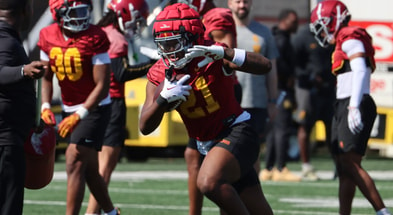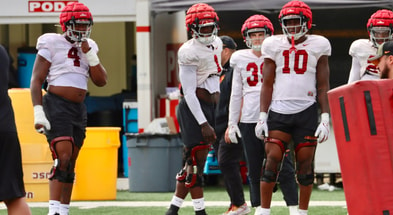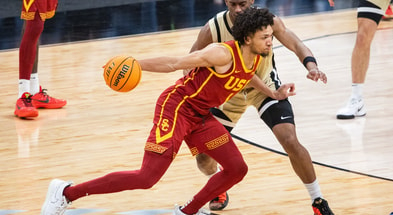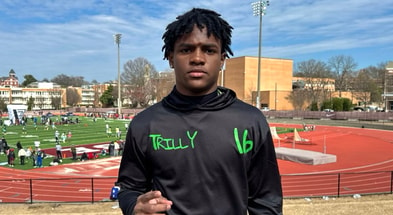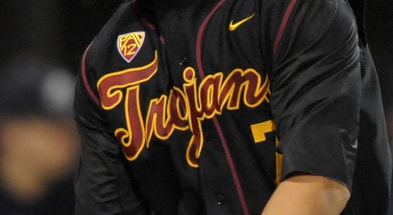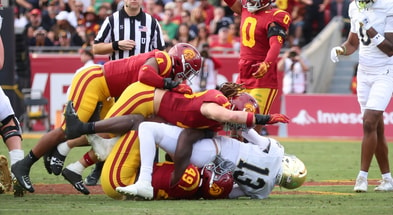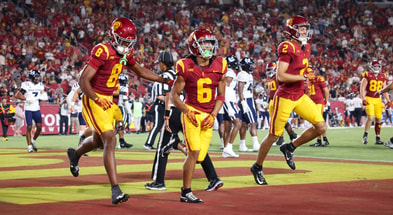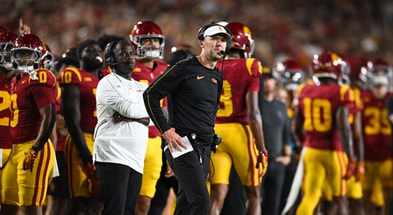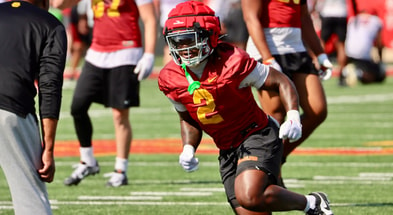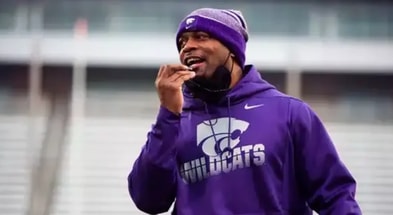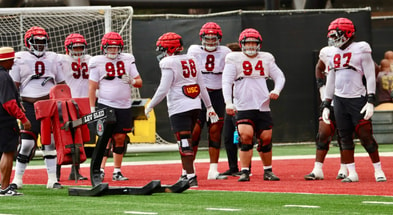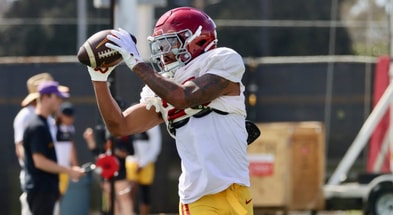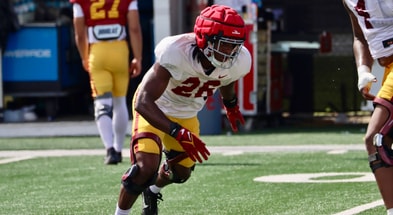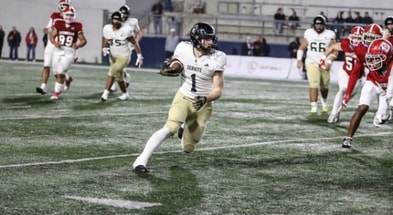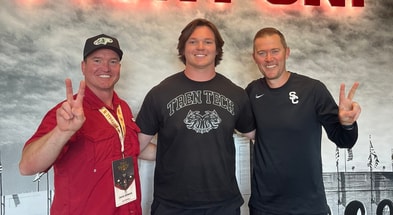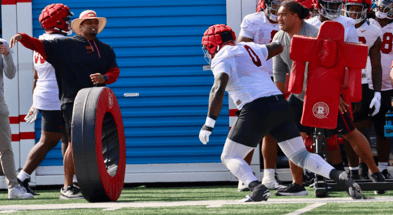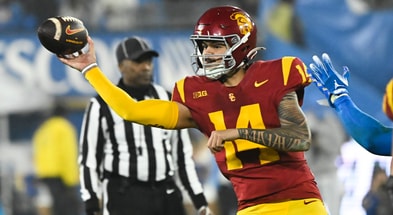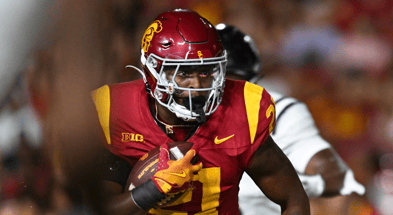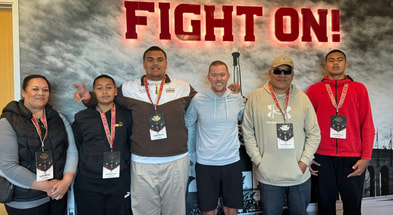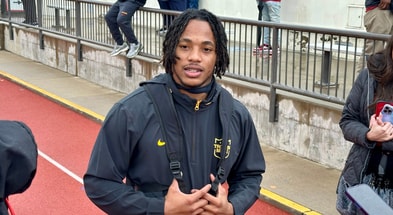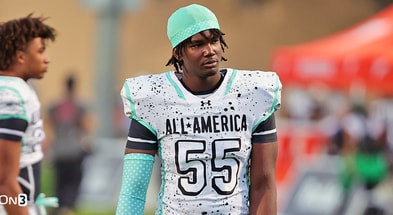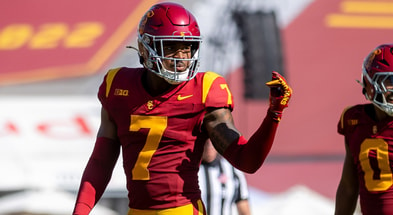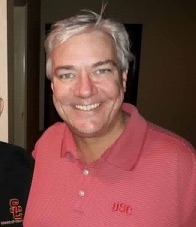Musings from Arledge: NIL, Big 12 and rushing numbers

Here I am, just minding my own business, when the entire college football world collapses around me. The NCAA bows to the inevitable, and athletes can now profit from their names, images, and likenesses. The Supreme Court makes clear that the NCAA is an unlawful monopoly that is on the verge of being retired, and the president of the NCAA then says that maybe it should be. Then Oklahoma and Texas decide to abandon the Big 12 to join the SEC. The fundamentals of the college-football world have changed more in the last few weeks than at any other time since Teddy Roosevelt had the Ivy League presidents in the Oval Office to discuss new rules for college football.
The following are my half-formed thoughts on these issues.
Let’s start with name, image and likeness. The new rules will dramatically change college sports. They will complicate matters for universities and coaches. They will make some traditionalists very uncomfortable.
They are also just and necessary. It was outrageous that athletes who generate millions of dollars can help make millionaires out of their coaches, their athletic directors, their conference commissioners, and a bunch of TV executives and talking heads, yet the players can’t even make money off their own famous names. I’m not even talking about sharing the revenues from the school, although it’s hard to justify not sharing with those who generate the money. I’m talking about not being able to make a TV commercial or sell a T-shirt or monetize their Instagram accounts. With the explosion in the popularity of college football and basketball, and the avalanche of television dollars that came pouring into so many coffers, it was outrageous that athletes were kept below the poverty line in the name of “amateurism.” And even if we don’t know what comes next – and we don’t – and even if some of what comes next we won’t like, it’s still better that this injustice has been ended.
Now we’ll see which universities are nimble enough, and committed enough, to take advantage. NIL rights are far more valuable when combined with university intellectual property. Reggie Bush could make far more money offering his likeness wearing a USC jersey than out of it. There will be immense pressure on schools to license their trademarks to athletes in order to recruit effectively. Michigan is already allowing players to sell their jerseys. This is just the tip of the iceberg.
Other pressures will arise also. Players will demand more alternative jerseys, I suspect. Wouldn’t you rather be able to sell the home, away, and two alternative jerseys? Players at USC will demand that their names be on the backs of their jerseys. The old-fashioned idea team concept that USC has clung to for so many years … is likely going to die at some point soon.
Money will complicate the locker room and coaches’ lives. Waiting for three years to start hasn’t been popular in some time. But now this means three years of revenue losses.
Now being given the number 55 at USC not only comes with pressure and expectations. It will also come with a six-figure bonus, because that jersey will help move product.
And what do coaches do when the star quarterback is making multiple millions per season and many of his teammates have nothing? They do what pro coaches do, I guess, which is find a way to make it work. College locker rooms have never been truly egalitarian. Do you think Keyshawn was just one of the guys in 1995? Was Leinart in 2005? But the disparities that have always existed will be amplified when the 2025 version of Leinart is driving a Ferrari and his backup rides a bike to class.
At the same time, the ability to capitalize on NIL may allow players to stay in school longer. The first-round picks will probably still jump, and they probably should. But the good college players who are hoping just to catch on with a team and need to leave school early to support their families? Those guys may be able to stay, finish their college careers, earn their degrees. That’s a good thing.
And don’t be surprised if the highest-paid players aren’t the best football players or basketball players at the university. Attractive female athletes from minor sports are going to rake in the cash. Some Trojan volleyball or tennis player is going to generate more revenue than USC’s quarterback.
College athletes have earned the right to cash in on their notoriety. Good for them. Now we’ll get to see whether the rest of us like what that means.
And that’s only one major change. The next: the NCAA. It’s dead. It’s just a matter of time. The Supreme Court could have killed it already; they signaled as much in a recent decision with a very limited scope. But the Court held off, no doubt choosing to let the marketplace deliver the bullet. The big schools no longer have a use for the NCAA, and the guys that have all the money call all the shots.
I suspect the NCAA accomplished some good over the years, but it’s been some time. I won’t miss the corruption or the incompetence or the fact that its primary goal for the last couple of decades has been to make sure that there is no way on God’s green earth that the kids generating the billions of dollars should receive any of it. Good riddance. If I never see Mark Emmert again, I’d consider that progress.
But as Hamlet almost put it, what comes next is the rub. New markets have opened up. Creative destruction is on the way. We don’t know what college football will look like ten years from now. We don’t even know what the ground rules will be. Alabama’s vision and Stanford’s vision are likely to be dramatically different. They always have been. But until now, both have bought into the same basic structure: the same number of games, the same number of scholarships, the same rules (which may even have been honored on occasion) about what players would be paid. Now all of that is gone. The NCAA will not be able to set the rules. It’s not clear that no large coalition created to replace the NCAA could set the rules either, since it likely would also run afoul of the antitrust laws … unless it operated as more of a professional league and the players had a collective bargaining agreement. And I think that’s exactly where things are headed. Expect the players to get close to 50% of the revenues that are generated, as that’s the norm across most professional sports, and college football is every bit as popular, every bit as lucrative, as many professional sports.
Will Stanford participate in that system? Will Rice? Will anybody care either way?
Will USC? I don’t know the answer to that question. The reality is that USC is well-positioned in some ways to compete in the new world of college football. USC is still a huge name in college sports, and it sits in the entertainment capital of the world. All major college football programs generate money and have fan bases. Alabama players will make money playing in Tuscaloosa. (Their new starting quarterback is apparently already off to a good start.) But there is a difference between being a media star in Tuscaloosa and Los Angeles. USC can provide opportunities that no other program can provide. The university’s early moves indicate that the leadership understands that and wishes to take advantage of it.
And yet. Being that USC is unable to rid itself of a head football coach whose results show he is completely over his head, and being that having a qualified CEO seems to be the minimum expected commitment from any organization that hopes to succeed, it’s hard to be confident. Going forward, Clay Helton not only costs USC money – just think of the revenue difference between Clay’s 65% winning percentage and lower-tier bowls and the revenues the university gains from Carroll’s 82% winning percentage and consistent top-four finishes – but he also costs the players money. Alabama’s quarterback has over a million dollars in endorsement deals. He hasn’t done anything yet. I doubt Kedon Slovis pulls in equivalent revenues despite two years of quality play, because USC is currently a second-rate program on the national stage. We can tell the truth about that here, can’t we?
USC hasn’t shown an interest in competing with the big boys for the last decade. So the question is whether USC wants to commit to this new world of college football, one where the veneer of amateurism has been stripped away, and players are risking their health not for school, not for an education, but for cold, hard cash? Is USC ready to compete against Ohio State by showing that its 18-year-old quarterbacks make more money than the Buckeyes’ youngsters earn? Is USC ready to have its sophomore wide receiver, who rarely if ever sets foot in a classroom, drive to practice in a new Bentley? I’m not sure. USC wasn’t as committed as its traditional peers under the old rules. I don’t believe USC will be as committed as Alabama, Oklahoma, Ohio State, and Clemson under the new, wild-west rules.
Top 10
- 1Breaking
Cederian Morgan commits
Alabama lands 5-star
- 2New
NCAA transfer waiver
One-time new transfer window
- 3
10 fastest players in CFB
EA Sports reveals ranings
- 4Hot
National High School Rankings
Way Too Early Top 25
- 5
Ranking SEC schedule
Toughest to easiest
Get the On3 Top 10 to your inbox every morning
By clicking "Subscribe to Newsletter", I agree to On3's Privacy Notice, Terms, and use of my personal information described therein.
Some of those other traditional powers may fall by the wayside, too, of course. When cartels break up, when real competition comes in, when the rules change and innovators are able to find new widgets and new ways to sell them, the winners are sometimes a surprise. The average age of an S&P 500 company is 20 years. It used to be 60. TWA and Pan Am are dead. So is Kodak. And Blockbuster. Many of the most-profitable companies in the world didn’t even exist when Pete Carroll took the USC job. We don’t know who will thrive in this new world. The big, established brands don’t always win out when the world changes. And this world is changing, faster than any of us could have expected.
In fact, by the time this article is published, Texas and Oklahoma may already be in the SEC, and they will have demolished the rest of the college football world in the process. The SEC is already the elite destination for blue-chip prospects. It is already the best conference. It is already ahead of its competition. If it lands Texas and Oklahoma, we live in a new, unipolar moment. It’s the world after the fall of the Soviet Union. There is one superpower and then there is everybody else.
Obviously, if Texas and Oklahoma leave, the Big 12 becomes irrelevant. Mountain West irrelevant. It will have nothing. No programs worth watching, no hope of future lucrative TV deals, no future. Its teams will be scrambling, looking for good landing spots. And I’m not sure any of them are worth taking. Kansas basketball is worth something, I suppose. I still wouldn’t want them. And the rest of the conference? Hard pass. It’s just now a conference full of Wazzus and Colorados if the big two leave, and we have enough Wazzus and Colorados, thank you very much.
But it’s not just the Big 12 that will be left hurting. The Big 10, ACC, and Pac-12 all become distant, second-class citizens, moons circling the mighty SEC. The Big 10 still has some heft and some commitment to football. Grab Notre Dame and it can almost compete. Almost. Grab Clemson, Miami, and Florida State, and you now have a second super-conference. Will that happen? Who knows. But there will be a flurry of phone calls, and a whole lot of desperate politicking between the conferences.
Where will the Pac-12 be? Closer to the depleted and degraded Big 12 than the SEC. The Pac-12 has little to offer. It could and should have lured Texas and Oklahoma some years ago. But socialism dies hard. The Pac-12 was not willing to stomach a Texas program that played by different rules, and only USC of the major powers was likely foolish enough to decide that sharing equally with Oregon State was good business. So the Pac-12 and its collection of socialist comrades will be like the Warsaw Pact circa 1990: way past its sell-by date, a destination of no appeal, and just hoping to hold on as long as possible. That’s a shame, but that’s what happens when short-sighted Pac-12 universities go along (or participate in) the kneecapping of the conference’s only real moneymaker, and when people like Pat Haden and Larry Scott are given authority to make decisions. Having given a succession of fools the driver’s seat, the Pac-12 is speeding toward the cliff.
But all of that is still in the future. First, we have a season to play, and we’re only weeks away now.
So I’m going to harp on one of my favorite topics for a bit, because when you’re a fan of Tailback U, with a history of smashing opponents in the facemask, and the coaching regime decides to go Charmin-soft, it’s hard to stop talking about it.
So let’s have some fun with numbers. In the 19 games since Graham Harrell brought his Tecmo Bowl Air Raid to USC – a period, you might remember, that coincides with Clay Helton’s decision to become the Prime Disciplinarian, the Penalty-Ender-in-Chief – the Trojans have had six games with more penalty yards than rushing yards. That’s about 32% of the time.
The Trojans have had eight games with fewer than 100 yards rushing. That’s 42% of the time.
Only twice has USC rushed for over 180 yards. To put that number in perspective, in 2005, USC averaged 260 yards rushing per game. (They threw it pretty well, too.) In 1981, Marcus Allen averaged 213 per game all by himself.
So using these numbers as the over/under, this season USC should expect four regular season games where they have more penalty yards than rushing yards, five games where the Trojans rush for fewer than 100 yards, and one 200-yard rushing game.
And if those numbers hold, Graham Harrell, who threw for a boatload of yards in college, but never won anything, and who hasn’t won anything as a coach, will still not have won anything.
Let’s hope the Trojans fix this problem right now. They cannot keep playing like Texas Tech if they hope to be playing against Ohio State.
Carthago delenda est.
